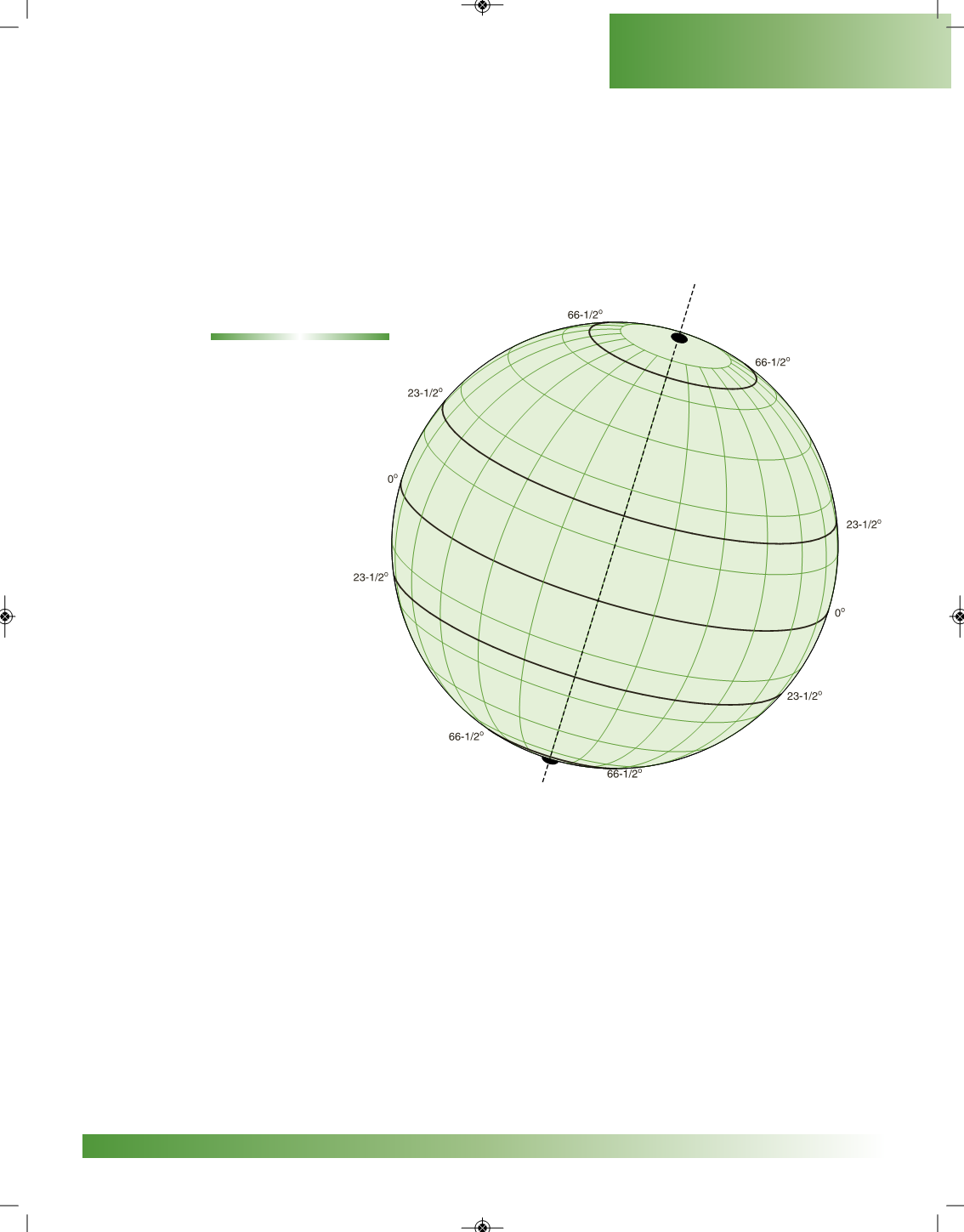
Lesson 4:
HowDoWe Use Lines of Latitude and Longitude?
Did you know that all places on earth have been mapped out by satellites? They float in space
while orbiting the earth. However, lines of latitude and longitude were invented long before satellites.
They are a common and easyway to locate any place on earth.Remember, we said that mapmakers
attached numbers, called degrees, to these lines. As you read the following information, it would be
good if you had a globe at which to look.
Part 1 – Latitude
ACTIVITY 1:
As you read, label
Sphere E
with the
names given to the special parallel
lines explained in this passage.
Remember, parallel lines run west
and east, but measure distances
north and south. (Lines do not
run, but that is a term used to
describe in which directions the
lines travel!)
Let’s find these lines. Start with
the
Equator
. That imaginary line
is called 0 degrees. The symbol
for degrees is °. From this line,
parallel lines range in numbers
from 0 degrees at theEquator to 90
degrees at the
North
and
South
GeographicPoles
.Parallel lines circle
the globe and are equal distances from
oneanother at everypoint, suchas railroad
tracks are.They never touch one another.We
read 90° N as ninety degrees north latitude.
Guess how 60° S is read?
Therearepopular namesgiven toother parallel lineson
the earth. Low (in number) latitude lines run from 0 degrees to 23 1/2 degrees north and south.
Because theearth tilts on its axis 231/2degrees, theareabetween these twoareas receives summer
(one season) all year.The parallel line that is 23 1/2 degrees north latitude is known as the
Tropic of
Cancer
.The parallel line that is 23 1/2 degrees south latitude is known as the
Tropic of Capricorn
.
Unless you are on a mountain or higher elevation, all areas between these two latitudes are
known as the
tropical
region. The tropical climate is warm all year and has a lot of rain. It is in this
region that the tropical rain forests are located. A rain forest is land coveredwith a very dense (thick)
growth of trees.
Twomore popular parallels to find on the globe are 66 1/2° N latitude and 66 1/2° S latitude.The
northern one is known as the
Arctic Circle
and the southern one is known as the
Antarctic Circle
.
These lines are parallel to theEquator.All areas between theTropic of Cancer and theArcticCircle to
the north, and Tropic of Capricorn and the Antarctic Circle to the south, are known as
mid-latitudes (for middle of the number range).
COPYRIGHT
5
PENNSVALLEY
Geography Skills
SphereE


